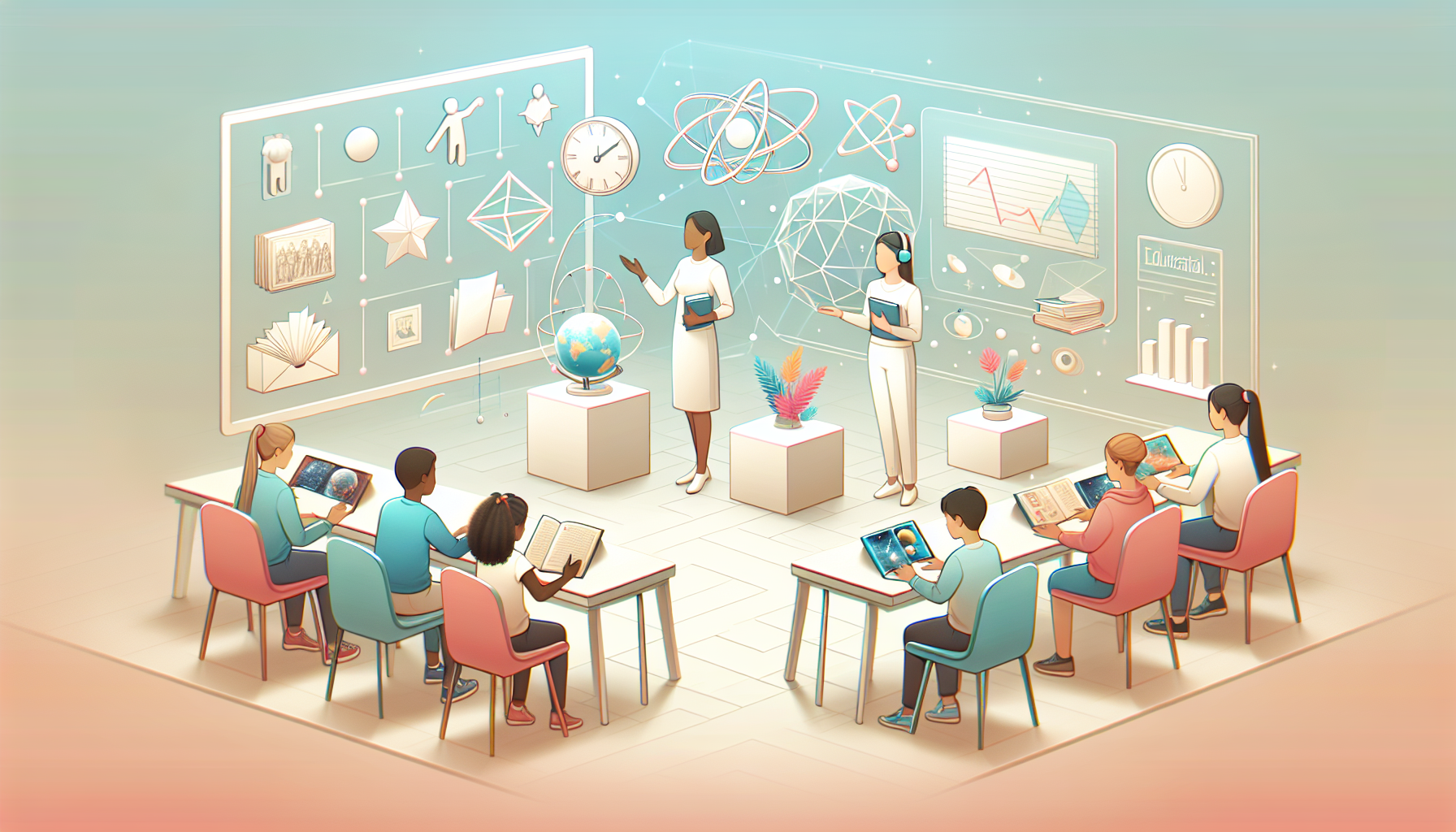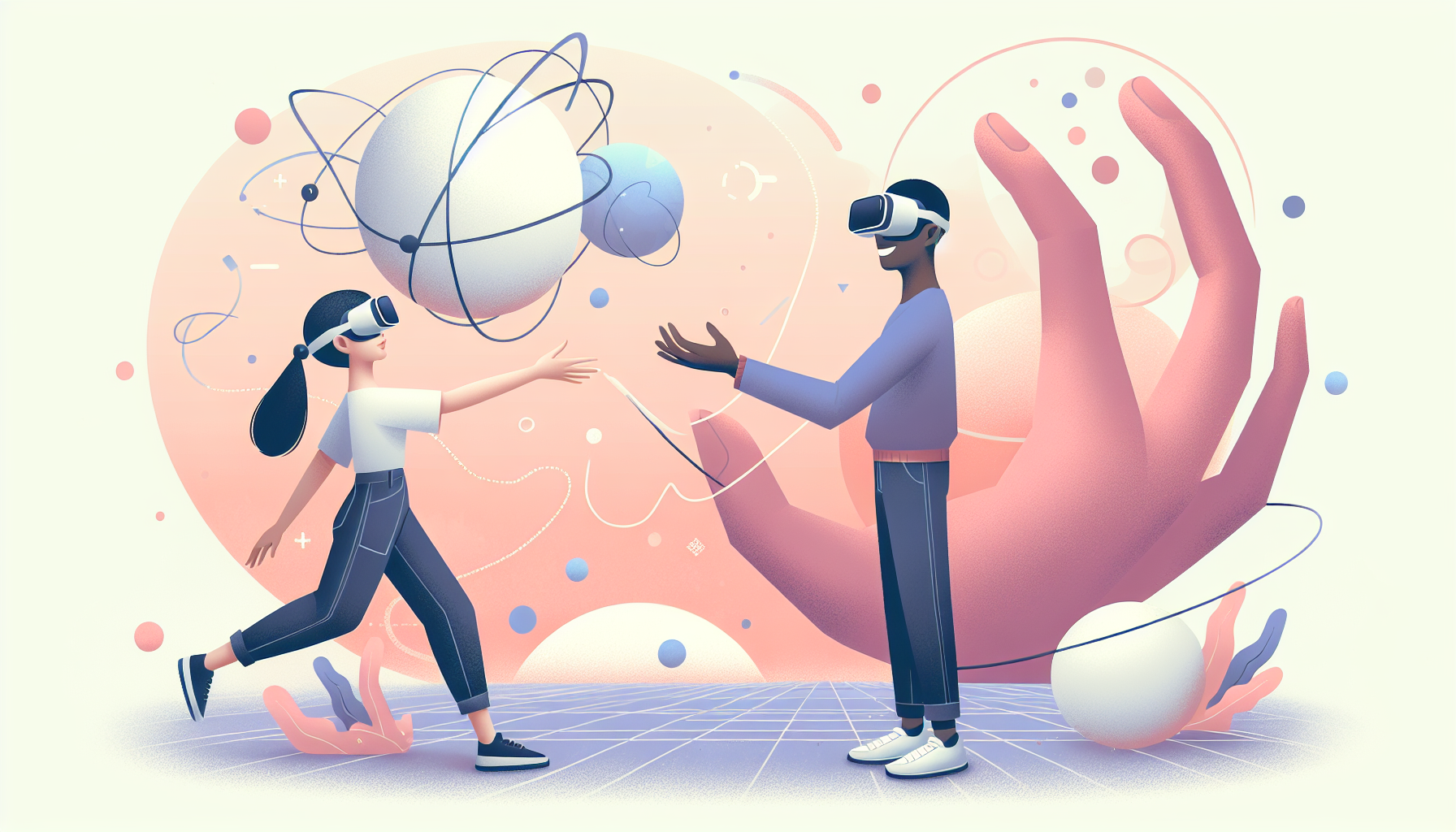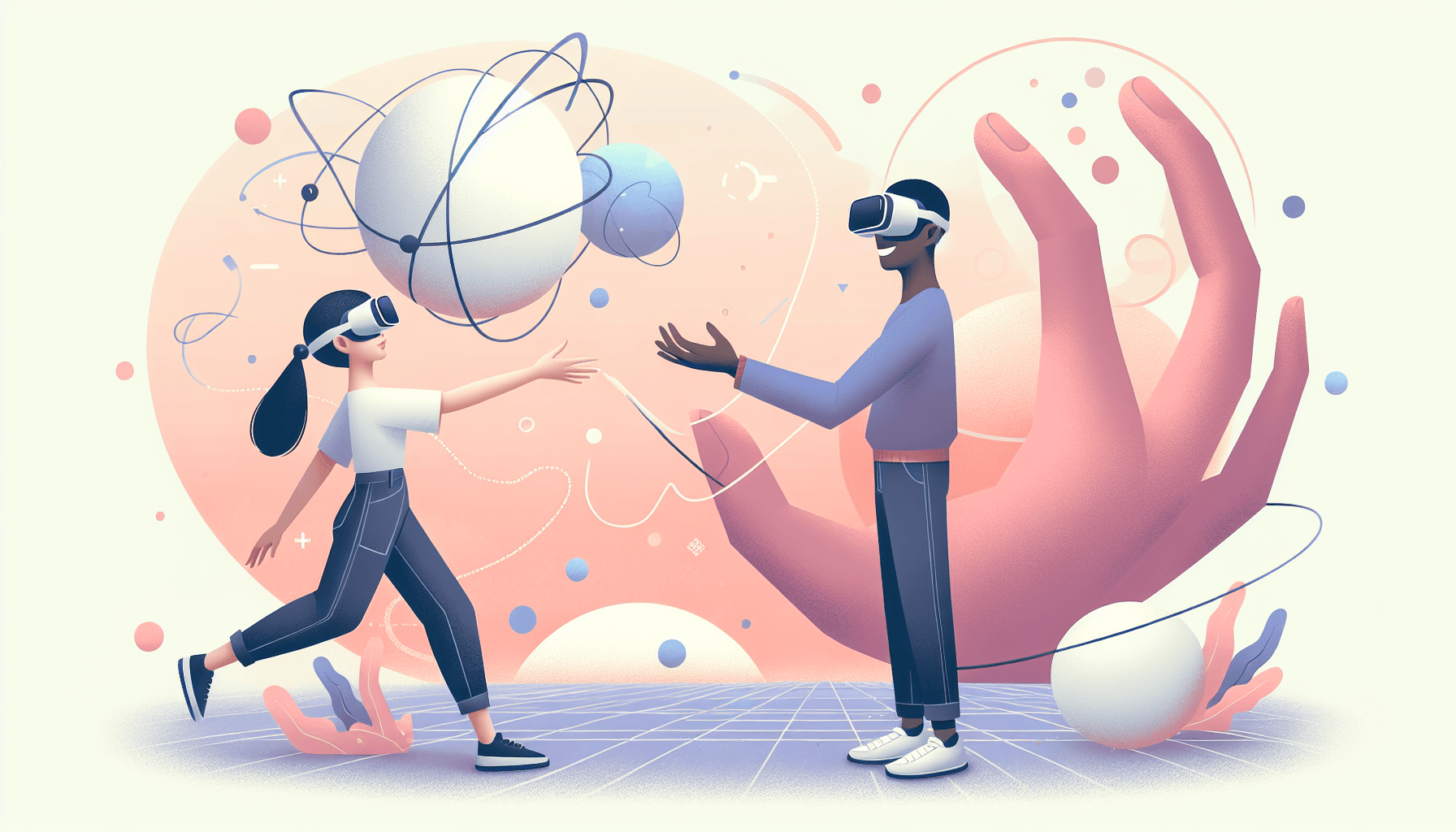Complete AI Prompt Pack
1000+ prompts • $37
Creating engaging virtual reality experiences can feel like an uphill battle, can’t it? With so many aspects to consider—from storytelling to user interactions—it’s easy to feel overwhelmed. You want to craft something that captivates users, but where do you even start?
Well, stick around! By exploring a variety of prompts tailored for different VR elements, you’ll find the inspiration and guidance you need to make your virtual worlds pop. With the right prompts, you’ll be on your way to designing immersive experiences that keep users coming back for more.
Get ready to dive into effective prompts for storytelling, design, user interaction, and much more. There’s plenty to discover, and it’s going to be a fun ride!
Key Takeaways
- Use specific prompts to guide the creation of immersive virtual reality (VR) environments.
- Focus on engaging storytelling with interactive narratives and emotional connections.
- Incorporate user interactions that are intuitive and encourage exploration.
- Design educational VR experiences that blend learning with fun, using real-time feedback and simulations.
- For gaming, create collaborative challenges and surprises to keep users interested.
- Utilize VR to evoke emotions through music, character development, and user-centric storytelling.
- Explore new avenues for art and design projects that allow users to interact with 3D elements creatively.

Effective Prompts for Creating Virtual Reality Experiences
Creating impactful virtual reality (VR) experiences often starts with the right prompts that guide the development process.
Here are some effective prompts to help you create immersive VR environments:
- Create a virtual reality environment that simulates a [specific place, e.g., ancient Rome] including realistic sounds and visuals.
- Design a VR experience that allows users to interact with historical figures and ask questions in real-time.
- Develop a story that adapts based on user choices, enhancing immersion through branching narratives.
- Focus on user engagement strategies that encourage exploration and discovery within the VR world.
- Incorporate real-world physics to enhance realism in VR interactions, like how objects behave.
Prompts for Immersive Storytelling in Virtual Reality
Immersive storytelling is key to engaging users in VR.
Here are prompts to craft effective narratives:
- Write an interactive narrative where the user’s decisions directly impact the storyline and character outcomes.
- Create a character with a detailed backstory, allowing users to uncover secrets throughout the VR experience.
- Design a world where users must solve puzzles that reveal pieces of the story’s plot.
- Include emotional story beats that resonate with users, crafting an emotionally driven experience.
- Implement multiple endings based on user choices, making each playthrough unique.
Using Prompts to Design Interactive Virtual Environments
Interaction is crucial in VR design, making environments feel alive.
Here are some practical prompts to enhance user engagement through interactivity:
- Detail a 3D space where users can manipulate objects using gesture-based controls.
- Create a dynamic environment that changes based on user actions, enhancing realism.
- Design soundscapes that respond to user location, using spatial audio to simulate the real world.
- Incorporate real-time feedback mechanisms, such as changes in the environment based on user choices.
- Map out a user-centric design that allows for intuitive navigation throughout the virtual space.
Prompts for Engaging User Interactions in VR
User interactions can make or break a VR experience.
To create engaging interactions, consider these prompts:
- Develop an interface that is easily navigable and supports gesture-based controls.
- Design interaction mechanics that facilitate social interactions, such as player-to-player communication.
- Craft feedback loops that reward users for exploration or successful interactions.
- Integrate community engagement strategies that encourage collaboration among users.
- Test and refine user motivation techniques that keep users invested in the experience.
For more tips on how to lead your creative projects, check out our post on prompts for creative writing. If you’re interested in how ChatGPT can assist in various applications, see our insights on ChatGPT for education.

Prompts for Educational Virtual Reality Experiences
Virtual reality has a unique ability to transform traditional education into engaging learning experiences.
Here are some prompts to help create educational VR content:
- Create a VR simulation that allows students to explore the human body, focusing on anatomy and physiology in a 3D environment.
- Design a virtual classroom where learners can interact with educational materials and collaborate with peers in real time.
- Develop a historical VR experience that immerses users in significant events, allowing them to witness and interact with key moments.
- Incorporate quizzes and assessments within the VR experience to reinforce learning and provide instant feedback.
- Create a virtual field trip that takes students to various ecosystem habitats, letting them observe wildlife and plant life up close.
Creative Prompts for Game Development in VR
Developing games in virtual reality opens up exciting possibilities for immersive gameplay.
Use these prompts to inspire your game development process:
- Design a VR game that utilizes real-world maps, allowing players to explore their own neighborhoods through a game narrative.
- Create a fantasy world where players must use unique powers to overcome challenges, encouraging creativity and quick thinking.
- Build a multiplayer game that hones collaboration, where players must work together to achieve a common goal or complete missions.
- Implement elements of surprise by adding random events that can alter a player’s approach to challenges throughout the game.
- Design a VR escape room experience, integrating puzzles that players must solve using clues found in their virtual environment.
Prompts for Enhancing User Emotions in VR
Emotional connection can greatly enhance the impact of a VR experience.
Here are prompts to foster user emotions:
- Create an experience that allows users to walk in someone else’s shoes, exploring their emotions and challenges through VR narrative.
- Design environments that react to user emotions, such as changing colors or sounds based on user interactions, enhancing the emotional atmosphere.
- Incorporate a storyline with relatable characters to evoke empathy and connection, turning the user into an integral part of the narrative.
- Utilize music and soundscapes strategically to influence the user’s mood and enhance the overall emotional experience.
- Include moments of triumph and failure, allowing users to feel a range of emotions throughout their adventure in VR.
Prompts for Virtual Reality Art and Design Projects
VR offers a new canvas for artists and designers to showcase their creativity in immersive ways.
Consider these prompts for art and design projects in VR:
- Develop a virtual gallery where users can view and interact with 3D art pieces in unique ways, like walking around and examining them closely.
- Create a VR sculpture tool that allows users to design and manipulate 3D objects in a virtual space, simulating the physical act of sculpting.
- Design a collaborative art project where multiple users can contribute to a single piece of VR art in real time.
- Establish a narrative-driven art installation that tells a story through visual elements and user interactions.
- Utilize VR to recreate famous artworks or historical environments, giving users a chance to experience art in entirely new dimensions.

Prompts to Test and Improve VR User Experience
Testing and improving user experience in virtual reality is essential for creating enjoyable and effective applications.
Here are some practical prompts to guide that process:
- Conduct a usability test with real users in a VR environment, focusing on their movements and interactions.
- Gather user feedback through surveys immediately after they experience the VR application to capture their thoughts.
- Track user navigation paths during the experience to identify any pain points or confusing areas.
- Implement A/B testing with different interface designs to see which one users prefer.
- Develop analytics to monitor user retention and engagement patterns within the VR experience.
Prompts for Multi-User Virtual Reality Scenarios
Creating multi-user scenarios in VR can enhance social engagement and shared experiences, making interactions more vibrant.
Here are some prompts to foster collaborative environments:
- Design a multiplayer experience where users must work together to complete tasks, emphasizing teamwork.
- Set up a virtual meeting space that mimics the comfort of face-to-face communication for remote teams.
- Implement social interaction elements that allow users to express emotions through avatars, enhancing realism.
- Encourage players to create joint narratives by allowing them to make small decisions that shape the story collectively.
- Host user-generated events, such as virtual concerts or game nights, where participants can engage in real-time.
FAQs
Effective prompts for storytelling in VR should focus on world-building, character development, and emotional depth. They can include questions that encourage creativity, evoke personal experiences, or challenge users to explore moral dilemmas within the virtual narrative.
Prompts can enhance user interactions in VR by guiding users to engage with their environment and provide choices that lead to unique outcomes. They help in creating immersive scenarios that encourage exploration and interaction with virtual elements.
In educational VR experiences, prompts guide learners through tasks, facilitate critical thinking, and encourage discussions. They help in fostering a deeper understanding of concepts by prompting users to reflect on their actions and the outcomes within the virtual environment.
Prompts can be instrumental in testing VR user experience by soliciting feedback on specific interactions, guiding users to observe and evaluate design elements, and identifying pain points or areas for improvement based on user responses during their immersive journey.
Last updated: August 28, 2024
